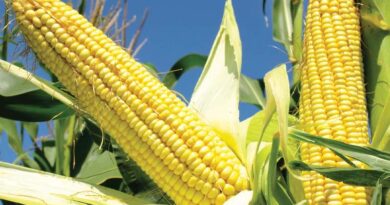Check soil temperature for even better fertiliser use efficiency in hybrid barley
10 February 2022, UK: Hybrid barley growers facing this season’s high nitrogen fertiliser (N) prices could help the crop use N even more efficiently by monitoring soil temperatures to fine-tune the timing of the first application, says Ben Urquhart, seeds technical expert for hybrid barley breeder, Syngenta.
According to Mr Urquhart, hybrid barley is already recognised for using N efficiently to build high yields – requiring no more N than conventional winter feed barley.
But with high fertiliser prices this season, he says there is an added focus on getting the most from every kilogram of N applied.
By checking soil temperatures to ensure the first N application is only made once warm enough for spring root growth to have started – provided that other conditions are also suitable – he says the applied N stands the best chance of being absorbed rapidly by the plant, rather than sitting unused in the soil.
“The first N application in hybrid barley, typically around mid-tillering (GS25), is key for feeding the crop’s spring hybrid vigour and supporting the optimum number of tillers for yield,” explains Mr Urquhart.
“It is particularly important because hybrid barley is sown at a lower seed rate than conventional winter barley. Establishing its vigorous canopy with this first N application also helps it to suppress black-grass, ryegrass and certain types of brome.
Also Read: USDA to Invest $1 Billion in Climate Smart Commodities, Expanding Markets, Strengthening Rural
“Typically, spring root growth begins when the soil temperature in the root zone, approximately 5-10 cm deep, reaches 4.5-5.0 degrees C. Therefore, check temperatures at this depth regularly. By combining the knowledge that the first N application in hybrid barley should go on around GS25, with the correct root zone temperature having also been reached for root growth to have started, it brings greater precision to targeting N more efficiently,” he adds.
Provided that field conditions are suitable – for example not waterlogged, covered in snow or frozen – Mr Urquhart says Syngenta’s overall guidance for hybrid barley is to apply 30% of the season’s total N dose at this first timing, followed by 50% at or just before GS31, and the final 20% two to three weeks after that, typically by the end of April. To ease workloads or to boost thin crops, he says an alternative is to apply 50% at the GS25 timing and 50% at or just before GS31.
“The actual kg/ha of N required at each timing will depend on individual field and crop situations. Growers should work with their agronomist to determine this,” he points out.
To provide an insight into rising soil temperatures, Syngenta is tracking these at different locations around the UK during the rest of winter and into spring. “Soil temperatures can vary in individual fields depending on multiple factors,” says Mr Urquhart, “so growers should still monitor their own crops. But the aim of our monitoring is to provide a benchmark of rising soil temperatures in different locations.















